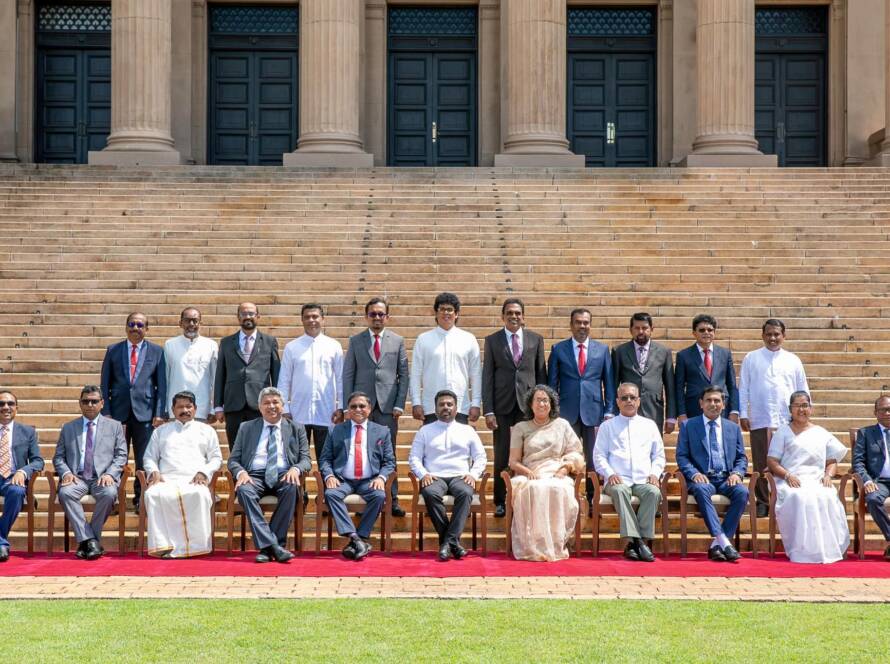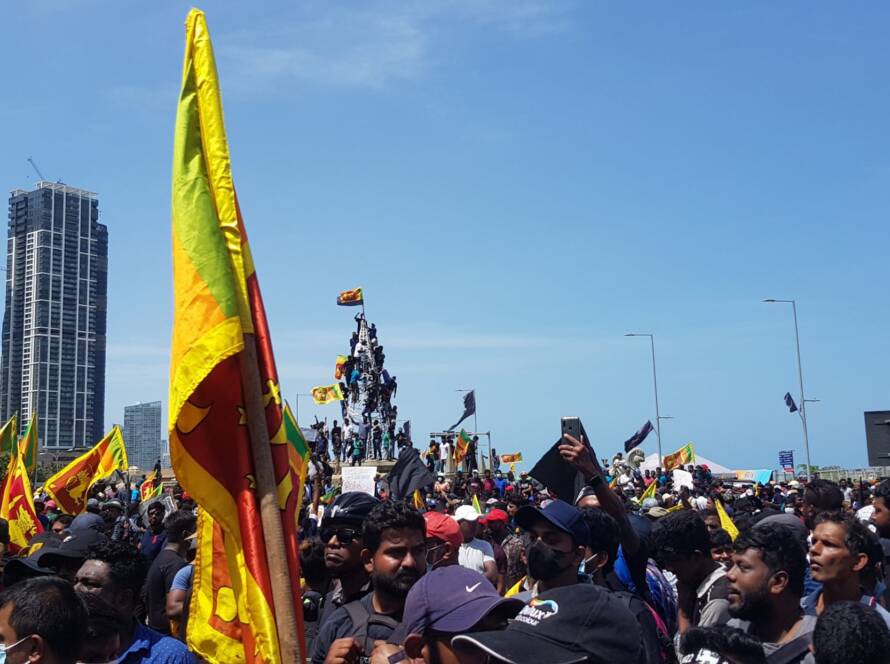By Dulmi Thimansa
After 15 months of relentless conflict between Israel and Palestine, a much-anticipated ceasefire agreement was reached last month.
The agreement was announced by Qatari Prime Minister Sheikh Mohammed bin Abdul Rahman Al Thani, alongside two US Presidents, Joe Biden and Donald Trump. The ceasefire commenced on January 15, following its approval by the Israeli cabinet.
Leading up to the truce, Israeli airstrikes continued in Gaza, claiming the lives of at least 13 Palestinians on the very first day the ceasefire came into effect. While the agreement has provided a glimmer of hope to millions, it continues to underscore the complex and deeply rooted challenges inherent in the conflict today.
Qatari Prime Minister Al Thani announced that Hamas has agreed to a three-stage ceasefire framework. The agreement involves ongoing negotiations during the first stage to finalize the terms of the subsequent stages.
In October 2023, Hamas captured a total of 251 hostages, including men, women, and children. As of now, Hamas continues to hold 94 individuals captive. However, Israeli intelligence estimates that only 60 of the hostages remain alive.
The condition and location of the hostages, as well as the circumstances of the others who are unaccounted for, remain points of concern for ongoing negotiations and humanitarian efforts. This situation has become a central focus of both Israeli and international diplomatic and military strategies.
Stages of the agreement
The initial stage of the agreement is scheduled to span a period of six weeks, or 42 days. During this phase, a number of hostages have been slated for release.
Specifically, the ceasefire arrangement will facilitate the release of certain Israeli captives being held in Gaza, in exchange for Palestinian prisoners currently detained by Israel. Additionally, this phase will include a gradual and strategic Israeli withdrawal from Gaza, progressively pulling back to the borders of Israel.
A critical component of this stage will also be a substantial, coordinated rise in humanitarian aid, which will significantly enhance access to essential resources and support for the civilian population in Gaza. This phase is expected to lay the groundwork for further steps in the peace process, fostering an environment conducive to dialogue and stability.
The second stage of the CFA is expected to culminate in a definitive end to the war. This will involve the withdrawal of Israeli military forces from Gaza, a critical move in stabilizing the region and establishing the foundation for long-term peace.
Given the scale of the destruction, international humanitarian aid will be crucial to recovery. Support from global organizations and governments will prove necessary. This will prioritize social and psychological healing, helping Gaza emerge more resiliently. Continued global support is essential for ensuring a successful, sustainable recovery.
Intervention of superpowers
US President Donald Trump directed his team to prioritize securing a ceasefire agreement before his inauguration. This initiative appears to have motivated the conflicting parties, along with Qatari, Egyptian, and US mediators, to intensify negotiations.
Steve Witkoff, Trump’s Middle East envoy, played a pivotal role in the diplomatic efforts in the region. Working in coordination with officials from the Biden administration, Witkoff traveled to the Middle East to facilitate negotiations.
The Israeli prime minister appeared to respond to this pressure. His decision may have been influenced by the political dynamics surrounding the US election. It was well-known that Netanyahu, along with his allies in Likud, favored a Trump victory. Despite this, he seemed to recognize the unique position Trump held in Israeli-US relations.
As one Israeli official reportedly told Crisis Group, Netanyahu might have been able to push back against President Biden, but he could not afford to say no to Trump. This underscores the weight of Trump’s influence in the region and the diplomatic leverage he exerted during this critical juncture in Middle Eastern politics.
Aftermath of the ceasefire
The ceasefire agreement, for all its achievements, does not guarantee an end to the conflict. Even from the first day of implementation, violations raised serious concerns. Israeli airstrikes in Gaza continued despite the ceasefire, casting doubt on the commitment of both parties to adhere to the agreement.
The agreement identifies the United States, Qatar, and Egypt as “guarantors.” Yet it notably lacks a defined mechanism to ensure enforcement. This absence of clarity raises concerns about the ability of these parties to hold all stakeholders accountable.
A significant question revolves around whether former President Trump, who has dedicated substantial diplomatic effort to securing the agreement, will push Israel to fulfill its obligations under the ceasefire. This question becomes even more critical when considering the additional commitments Israel may need to make during the subsequent phases of the agreement.
Trump himself has added to the uncertainty by expressing doubt about the ceasefire’s longevity. On January 20, when asked whether the agreement could hold, he remarked:
“I’m not confident. That’s not our war. It’s their war.”
Meanwhile, Egypt and Qatar, both of whom wield influence over Hamas, face their own challenges. Their influence may not extend to all factions within Gaza, particularly Hamas splinter groups or organizations which also hold hostages.
Another critique of the agreement is that it fails to outline a framework for the distribution of humanitarian aid within Gaza, critical given the region’s dire need for assistance. This gap is concerning as, by the end of January, two Israeli laws are set to take effect that effectively ban the UN Relief and Works Agency (UNRWA) from operating.
UNRWA has long been the primary provider of support for Palestinian refugees across the occupied territories and the Middle East. Its absence will leave Gaza’s residents without their most reliable aid organization. This creates significant uncertainty about how essential aid will be delivered to those in need.
The sequencing of aid deliveries will be another major challenge. With aid trucks crowding the limited and damaged roadways, alongside masses of displaced civilians relocating, the situation could quickly descend into chaos.
This issue will be further compounded by the simultaneous withdrawal of the Israeli military from Gaza, increasing the risk of logistical bottlenecks and potential clashes. Effective coordination will be crucial to prevent such chaos, particularly in the early stages of implementation.
The agreement also fails to address critical issues of deconfliction or coordination mechanisms between aid organizations and the Israeli military. Without these, misunderstandings, or worse, direct confrontations could occur, jeopardizing both aid operations and civilian safety.
The lack of communication protocols between these parties significantly increases the risk of operational failures and poses a serious threat to the already fragile stability in the region. This omission highlights the urgent need for a more comprehensive approach to humanitarian aid planning in future agreements.
The ceasefire between Israel and Palestine marks an important but delicate step toward mitigating violence and addressing the dire humanitarian situation in Gaza. While it provides a temporary pause in hostilities and creates an opportunity for further dialogue, its success hinges on the commitment of all parties, effective enforcement of terms, and sustained international involvement.
However, gaps in the agreement such as the absence of a comprehensive plan for aid distribution, clear enforcement mechanisms, and reliable coordination strategies underscore the challenges of achieving stability in such a conflict-ridden area.
For this ceasefire to reach some resolution, both sides must show a genuine willingness to adhere to their obligations. The international community, particularly the designated mediators, must remain actively engaged in promoting accountability, supporting relief efforts, and facilitating constructive dialogue.
Achieving lasting peace will require political determination and a collective focus on securing the safety and well-being of civilians, ultimately laying the foundation for long-term stability in the region.
Complicating the situation, Donald Trump has proposed relocating Gaza’s population to neighboring countries, a plan supported by Israeli Prime Minister Benjamin Netanyahu but rejected by Arab nations and Palestinian groups.
Critics argue that this proposal threatens the second phase of the ceasefire, which includes further hostage releases and Israeli troop withdrawals. Additionally, it raises legal and humanitarian concerns, as international law prohibits the mass forced relocation of populations. Many analysts fear that pushing forward with such a proposal could further destabilize the region and complicate efforts to reach a lasting peace.
Dulmi Thimansa is a writer passionate about diplomacy and international relations, with experience in public speaking and community impact initiatives. She is a student of International Relations and Law. She can be reached at dulmisamaradivakara@gmail.com.
Factum is an Asia-Pacific focused think tank on International Relations, Tech Cooperation, and strategic Communications accessible via www.factum.lk.
The views expressed here are the author’s own and do not necessarily reflect the organization’s.


